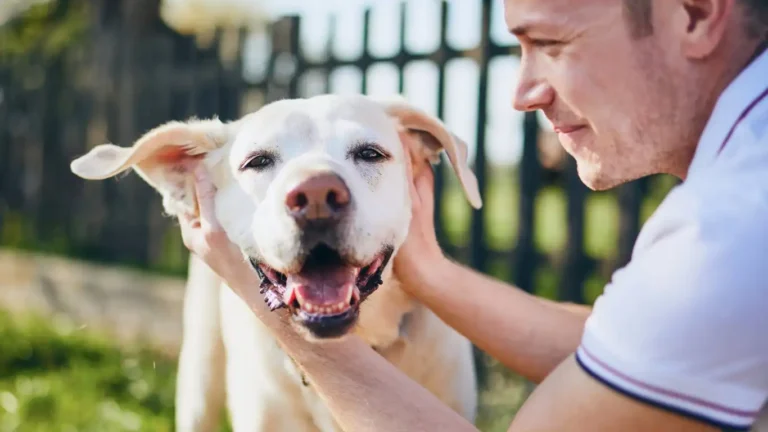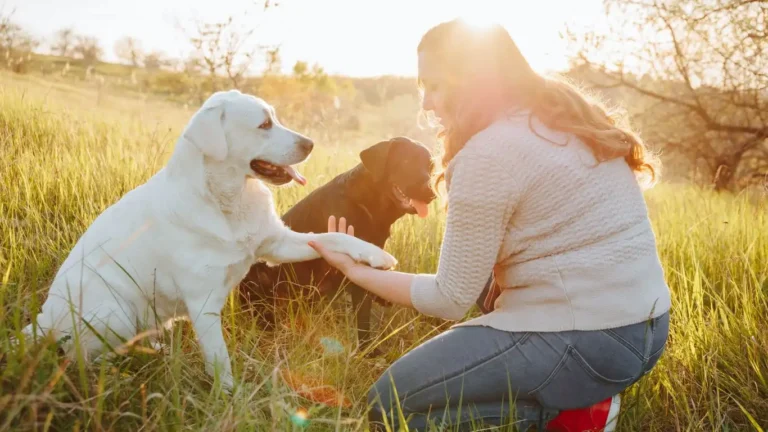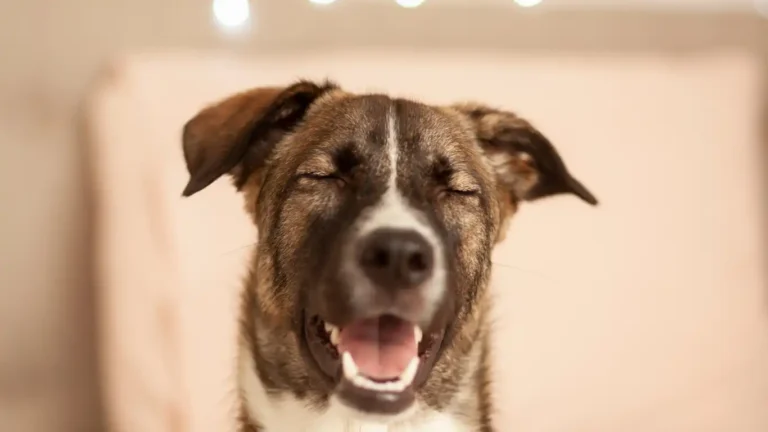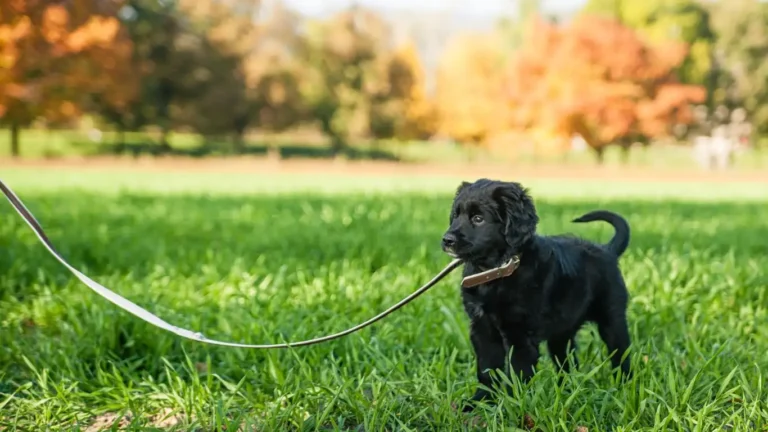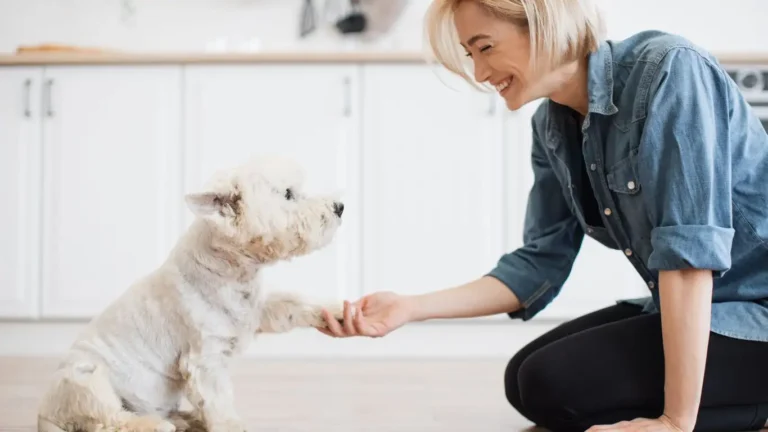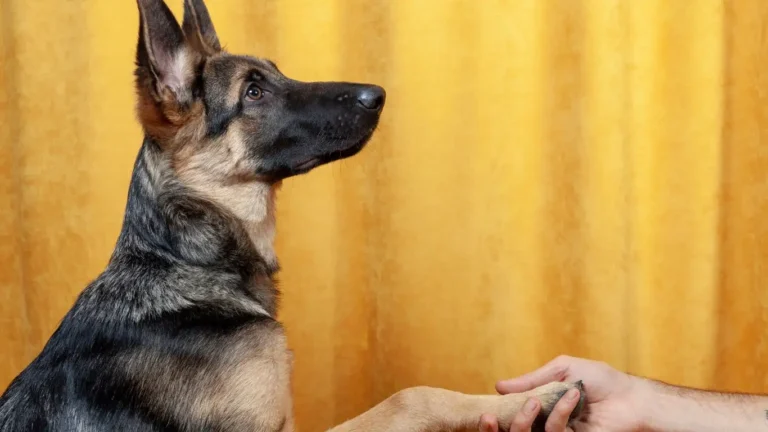Train Your Dog to Be Patient on Walks with This Simple Strategy
Ever found yourself halfway through a peaceful walk with your pup, only to realize your arm’s halfway out of its socket? Yep, I’ve been there more times than I care to admit. As someone who works as a Canine-Assisted Therapy Trainer, teaching patience during long walks is one of those make-or-break skills for both the dog and the human on the other end of the leash. That’s why today I want to dive into something that’s often overlooked but game-changing: how to train a dog to be patient during long walks. It’s not just about stopping the pulling—it’s about transforming the whole vibe of the walk into something calm, bonding, and genuinely enjoyable.
Why Patience Matters More Than You Think
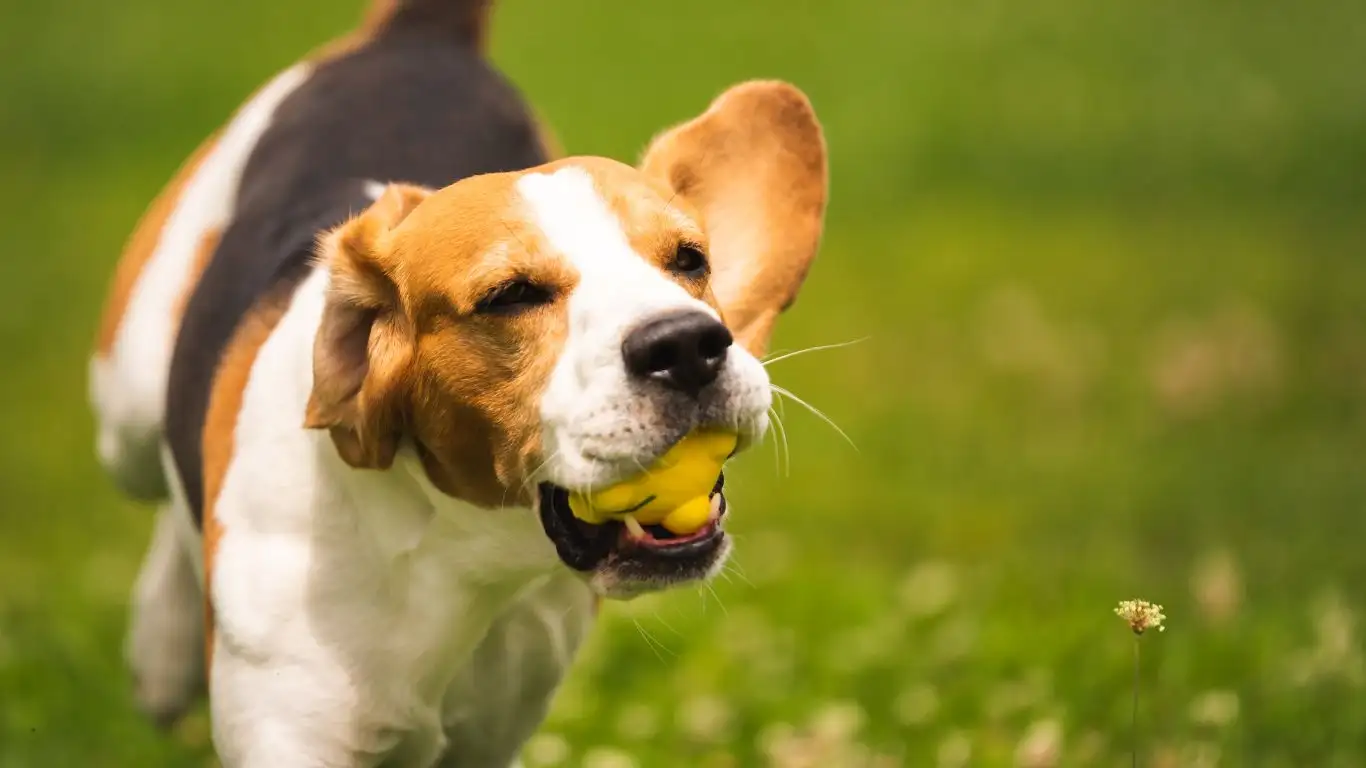
Let’s be real—dogs aren’t exactly born with patience. They’re curious, they’ve got places to sniff, squirrels to stalk, and sometimes zero chill. But here’s the deal: teaching a dog to slow down and stay present during a walk does more than save your shoulder joints. It builds trust, deepens your communication, and lowers stress levels for both of you. I’ve had therapy dogs who used to be leash-tuggers turn into zen-like walking buddies, just because we worked consistently on this skill.
It All Starts Before the Walk Even Begins
I always say that a calm walk starts at the front door. If your dog’s already hyped up and spinning in circles while you’re grabbing the leash, you’re starting the walk in reactive mode. Take a minute. Stand still. Hold the leash and wait until they sit or at least stop the bouncing. This is where patience begins—right at the threshold. Dogs pick up on our energy, so if we’re calm and clear, they’re more likely to mirror that.
Establish a Routine, But Keep It Interesting
Inconsistent walks make it harder for dogs to regulate their energy. I’ve worked with dogs who only got out once a week, and those walks were a hot mess—pulling, barking, overstimulation. But even walking 10 minutes every day with the same structure can create a huge shift. Still, don’t be afraid to switch things up. New smells, new routes, different times of day—it keeps their minds working and helps teach adaptability and calm in unfamiliar situations.
Top Techniques to Teach Patience on Walks
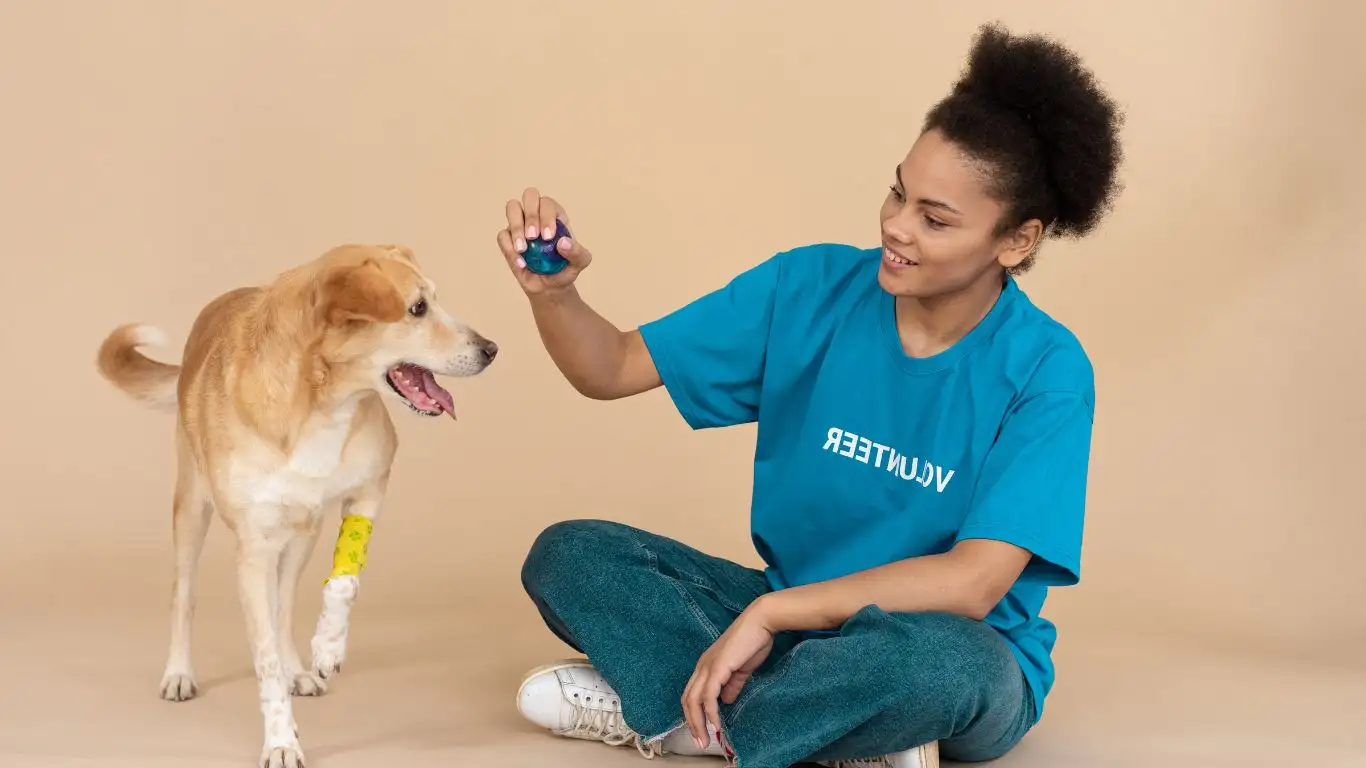
1. The Stop-and-Go Method
This one’s my go-to when I’m training new therapy dogs. If the dog pulls, we stop. Like, dead stop. No yelling, no leash jerking—just a pause. The moment the leash goes slack or they turn to check in, we move again. It’s a simple feedback loop that teaches them pulling gets them nowhere, but patience keeps the walk moving. I’ve had even stubborn huskies get the memo with this one.
2. Use the “Check-In” Game
Encourage your dog to check in with you during the walk. I usually reward eye contact or a quick glance with a “yes!” and a treat or praise. Over time, it becomes second nature for them to look to you for guidance, rather than charging ahead. This creates a subtle but powerful form of communication that makes walks smoother and more cooperative.
3. Teach a “Wait” Command
Another trick in the toolkit is using a “wait” cue at random points along the walk—before crossing a street, entering a gate, or even just for fun mid-walk. Ask for a sit or just have them pause for a few seconds. Reward calm behavior, and repeat. This teaches impulse control and gently reinforces that you’re the one setting the pace.
4. Bring High-Value Treats (And Know When to Use Them)
Treats are currency, and you’ve got to spend them wisely. Don’t just bribe—reward strategically. If your dog walks calmly past a barking dog without reacting, that’s a jackpot moment. I carry a pouch of chopped turkey or freeze-dried liver when training a new pup, and it works wonders. That said, over time, you can phase out the food and lean more into verbal praise and petting.
Building Trust Through Body Language
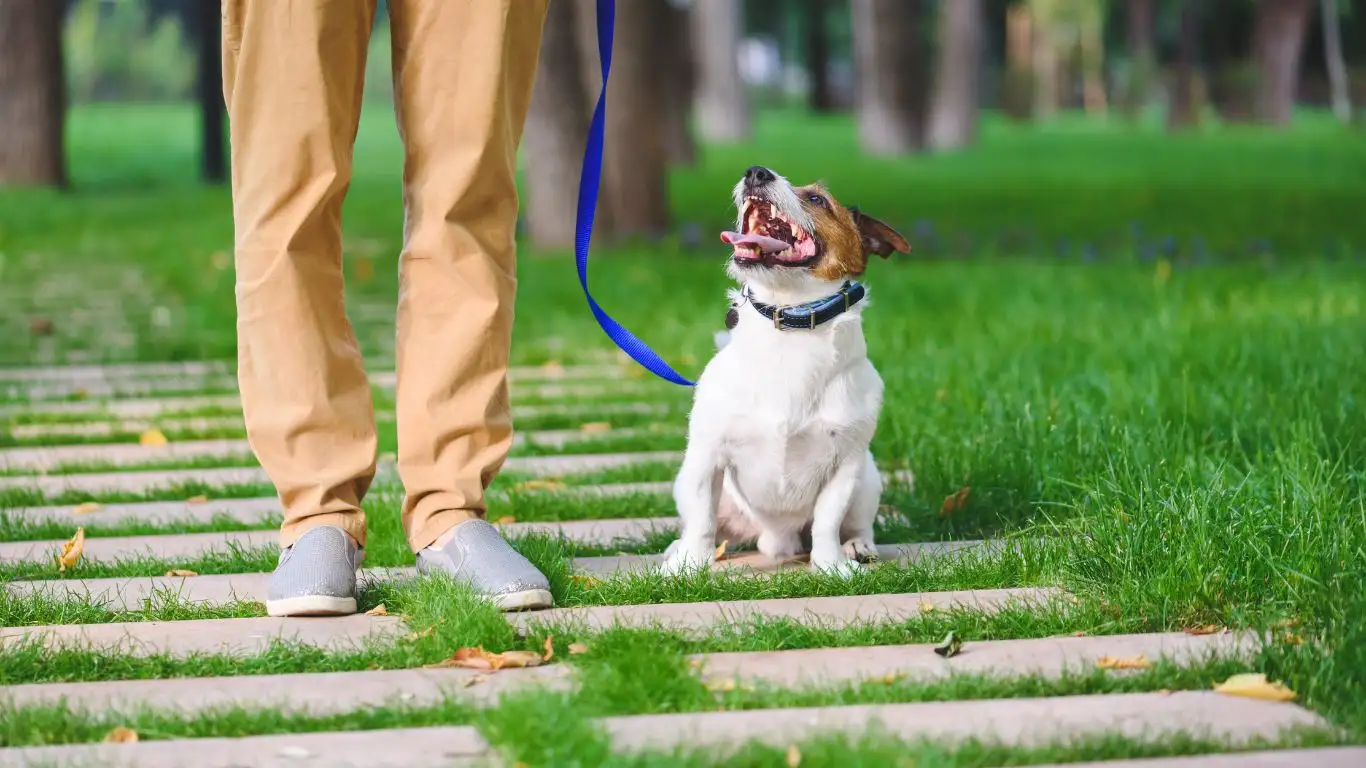
Dogs are masters at reading us. If we’re tense, rushing, or distracted, they’re going to feel it and respond with their own version of chaos. I always encourage dog parents to keep shoulders relaxed, walk with intention, and avoid texting during training walks. It’s amazing how quickly a dog relaxes when you do. You’re not just walking a dog—you’re walking with them. That difference matters.
Bonus: My “Zen Zone” Drill
This is something I developed after working with a reactive shepherd mix named Milo. We’d find a quiet spot—like a park bench or grassy corner—and just sit. No walking, no commands. Just sit together for 5–10 minutes. At first, Milo was antsy, pacing, whining. But over time, those moments became his favorite part of the walk. It taught him to find stillness, and that stillness translated to the rest of our time outside. Now, it’s a staple in my training sessions.
- Start Small: Don’t expect a 5-mile patience parade on Day One.
- Read the Room (and the Dog): If your pup’s overwhelmed, scale back.
- Celebrate Tiny Wins: Every loose leash moment is a step forward.
What to Do When Your Dog Loses Patience Mid-Walk
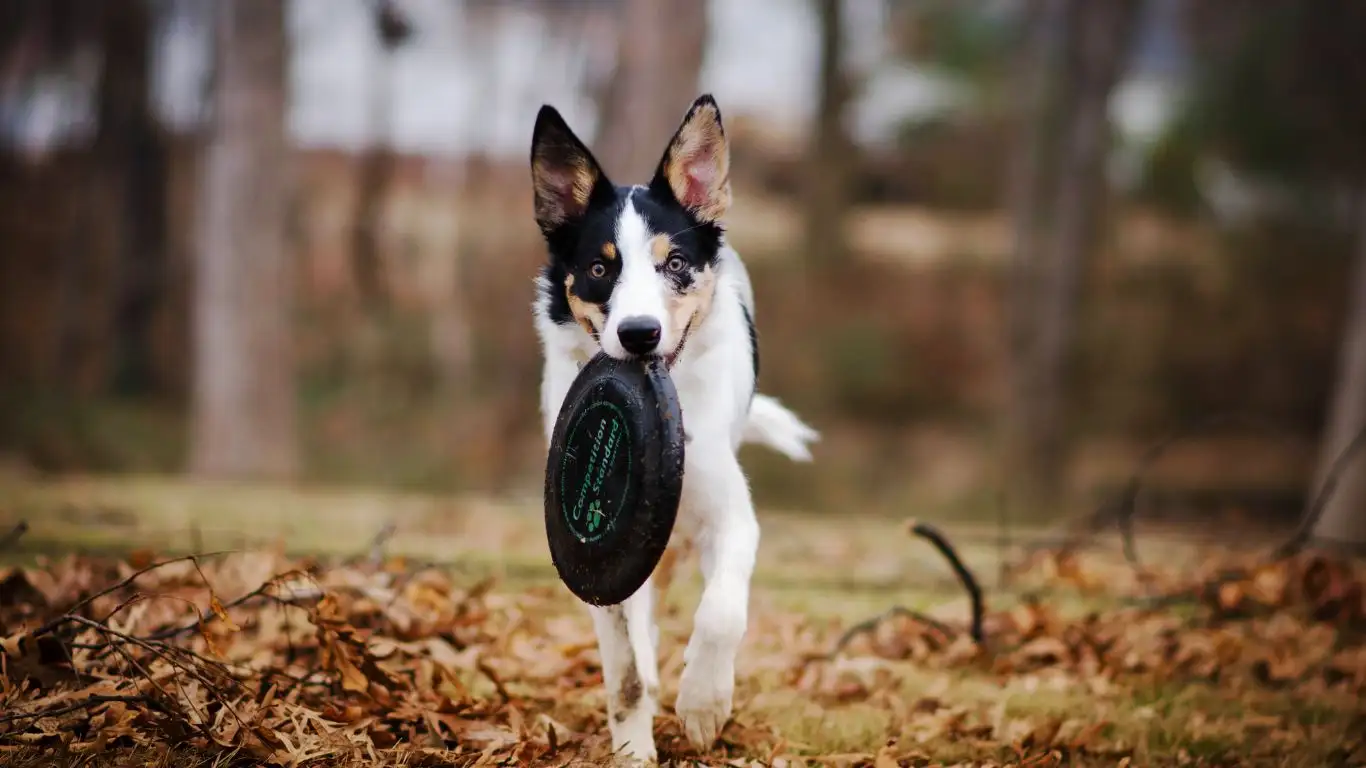
Alright, let’s talk about the real-life stuff—the moments where all your training seems to fly out the window and your dog is suddenly dragging you toward a rustling bush or flopping down on the sidewalk in full protest mode. It happens. Even the most patient pups have their off days. One thing I always remind clients (and myself) is this: don’t panic, and don’t take it personally. Dogs are allowed to have moods too.
When this happens, try not to yank or plead. Instead, pause and observe. Is something triggering them? Are they overstimulated, tired, bored? I once worked with a golden retriever named Sunny who’d sit and refuse to move whenever she hit her overwhelm limit. Turns out, she needed shorter walks with more mental breaks rather than long, continuous strolls. She wasn’t being stubborn—she was overloaded.
Ways to Regain Focus When Things Go Sideways
- Switch Directions: Sometimes just turning and walking the other way can reset their brain. I call it a pattern interrupt—it shifts their focus off the trigger.
- Sniff Break: Allowing a minute or two to sniff a grassy area can work wonders. It calms the nervous system and gives your dog a job to do.
- Engage with a Simple Cue: Ask for a sit or a “watch me.” Rewarding focus helps redirect their energy without a struggle.
These aren’t just quick fixes—they’re trust-building moments. How we respond to those frustrating beats teaches our dogs whether they can rely on us to stay steady or not.
Training Tools That Can Help (And What to Avoid)
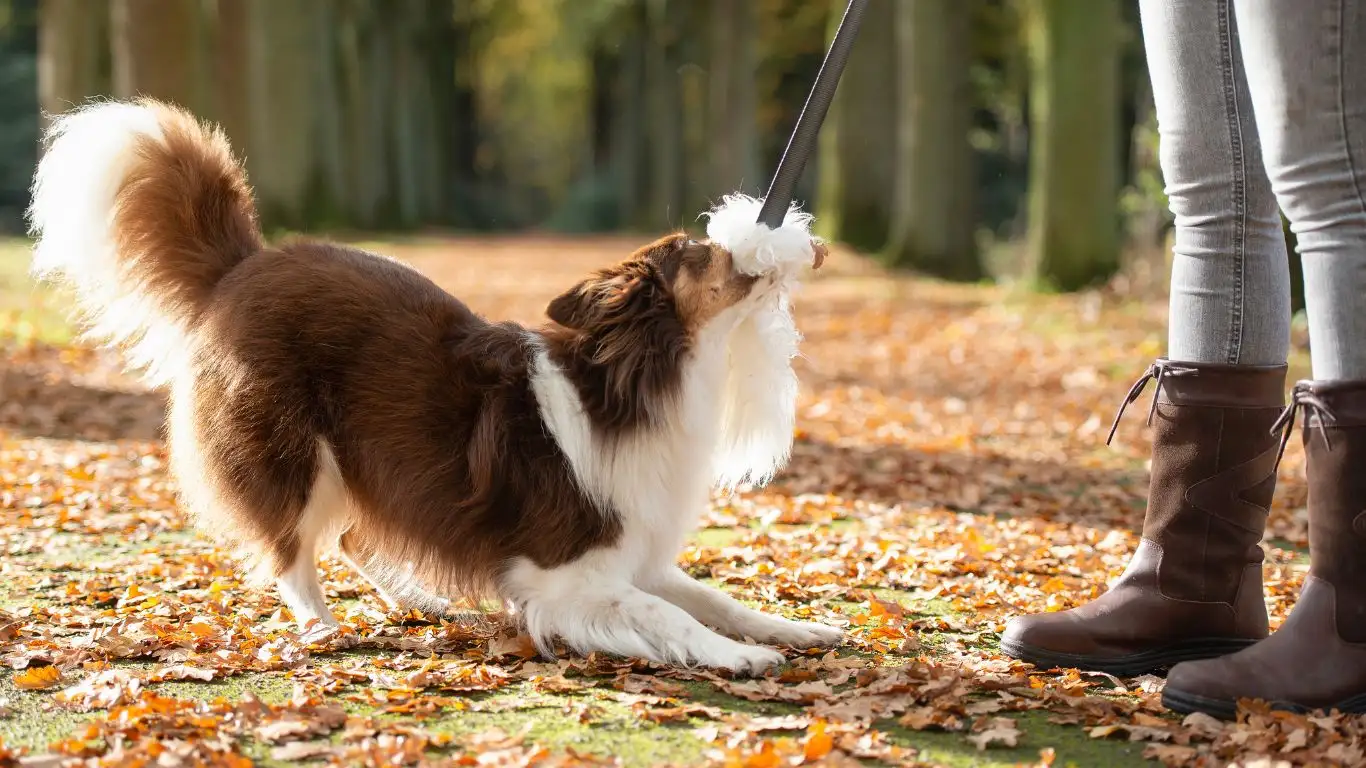
I’m not big on gimmicks or harsh tools. But the right gear, used with care, can absolutely support your training. Here’s a rundown of what’s worked in my own sessions, and what I tend to steer away from:
My Go-To Tools:
- Front-Clip Harness: Helps discourage pulling without choking or discomfort. I’ve had a lot of success with brands like PetSafe and 2 Hounds Design.
- Treat Pouch: Keep those rewards handy. You don’t want to fumble for a treat five seconds after your dog nails a behavior.
- 6-Foot Leash: Just the right length for control while still giving your dog room to explore. Avoid retractable leashes during training—they teach inconsistency.
What I Avoid:
- Choke Chains or Prong Collars: I’ve seen more harm than help with these. Fear-based tools may suppress behavior, but they rarely build true understanding.
- Head Halters (In Most Cases): While some trainers love them, I’ve found that unless introduced slowly and positively, many dogs find them uncomfortable and resist more.
At the end of the day, tools should support communication—not replace it. They’re not shortcuts, just ways to enhance the training foundation you’re already building.
Building Patience Through Mental Stimulation
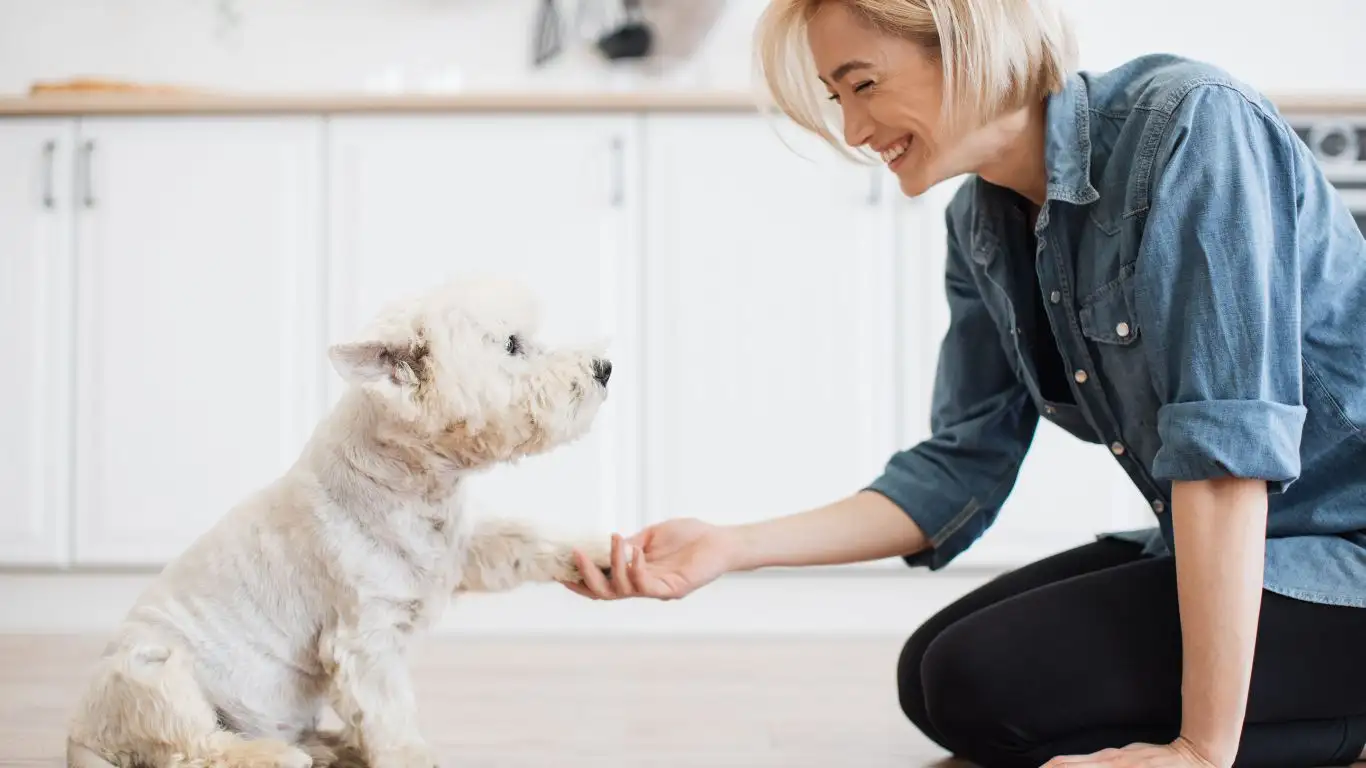
Here’s something most people overlook: physical exercise alone won’t calm a dog down long-term. You can walk them five miles and they’ll still be bouncing off the walls if their brain isn’t getting a workout too. That’s why I’m a huge advocate for mixing in mental challenges—before, during, and even after walks.
Try These Brain Boosters:
- Sniff-and-Search Game: Toss a few treats into tall grass and let your dog hunt them out. It taps into their natural instincts and slows them down.
- Name That Cue: During walks, ask for known commands in different environments. A sit at the park bench, a down at the trailhead—it reinforces listening under distraction.
- Interactive Toys: Bring a lightweight puzzle toy or tug toy and make a 5-minute play pit stop mid-walk. You’ll be surprised how that little burst of focus resets their pace.
I had a doodle client named Archie who used to sprint the entire block like it was a race. But once we started adding training games into our walks, his pace shifted. He had a job to do—and a reason to stay connected with me. Honestly, walks turned from chaos to connection in a matter of weeks.
Understanding Your Dog’s Personality
No two dogs learn patience the same way. Breed, age, past experiences—it all plays a role. A border collie might need more mental work than a bulldog. A rescue dog with a traumatic history might need double the time to trust you enough to stay calm. I always advise dog parents to ask themselves: “Who is this dog in front of me today?”
There’s no shame in slowing things down or adjusting expectations. If your dog struggles with impulse control, maybe focus on shorter walks with lots of breaks. If they’re older and tire easily, your patience training might look more like a stroll with a few check-ins. Be flexible, be kind, and be curious. Dogs have their own personalities and learning styles—just like we do.
Quick Questions to Ask Yourself Mid-Training:
- Is my dog overstimulated or under-exercised?
- Have I rewarded calm behavior recently?
- Am I calm and present right now—or distracted and impatient?
- Am I asking for too much too fast?
The more tuned in you are to your dog’s mood and needs, the smoother this whole process becomes. You’re not just training obedience—you’re building a relationship grounded in trust, communication, and yes, a little bit of shared patience.
Staying Consistent Even When Life Gets Busy
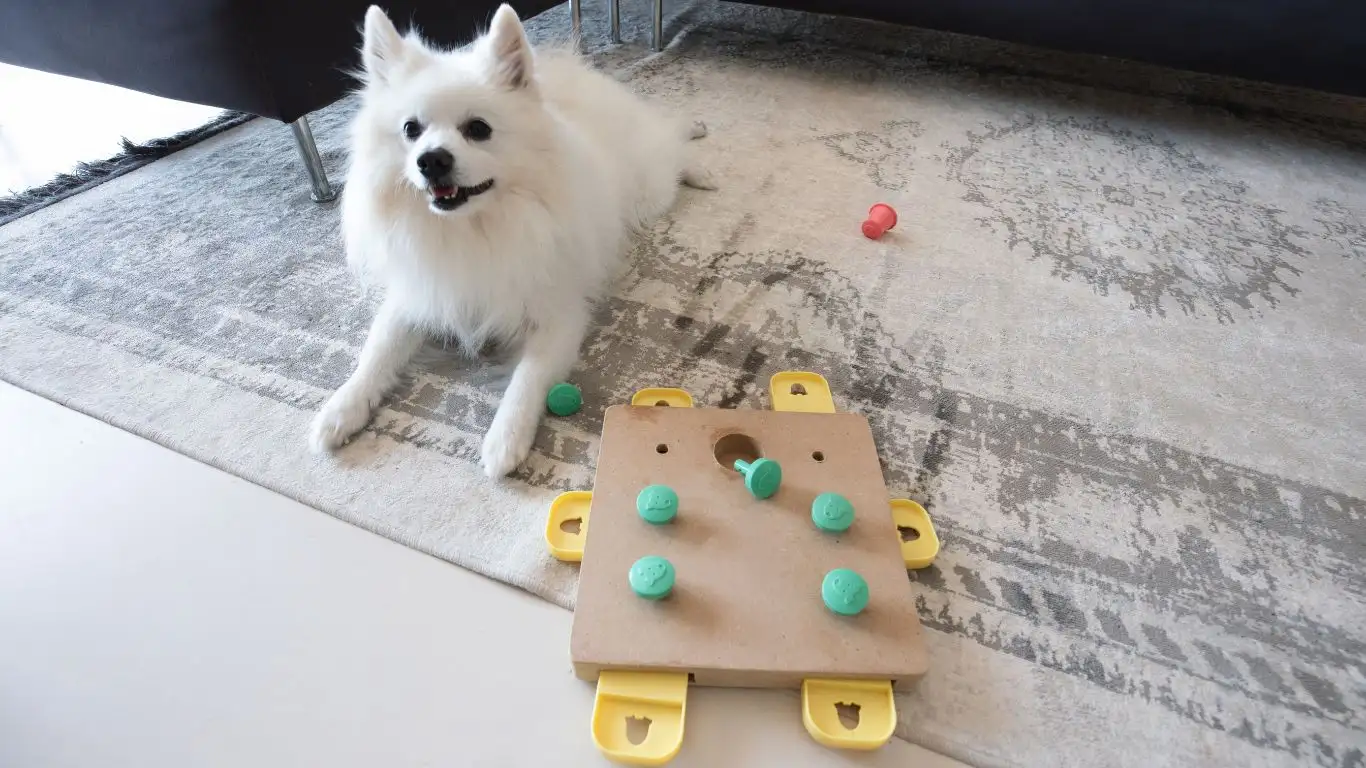
So, you’ve been working on how to train a dog to be patient during long walks, and things are starting to click. But then—life happens. Work gets hectic, the weather turns wild, or maybe you’re just plain exhausted. Trust me, I get it. I’ve juggled training sessions between therapy visits, family life, and some days where even a coffee break felt like a luxury. The key in those moments? Do what you can, and keep it simple.
If your usual 30-minute walk isn’t happening today, try a quick 10-minute patience session in the backyard or even the hallway. Reinforce calm behavior as you clip the leash. Ask for a “wait” at the door. These micro-moments matter, and they add up. Consistency doesn’t mean perfection—it just means showing up more often than not. And your dog? They’ll notice. They always do.
Set Yourself Up for Success
- Keep gear by the door: Leash, treats, poop bags—have it all ready to grab and go.
- Use verbal markers: A cheerful “let’s go!” or calm “easy” keeps communication flowing even on rushed days.
- Track your wins: I keep a tiny notebook for client pups to jot down things like “loose leash for 10 steps” or “ignored barking dog.” It keeps progress visible and motivating.
Training doesn’t have to be all or nothing. Some of the best growth I’ve seen came from those tiny, in-between moments.
Socialization as a Patience Tool
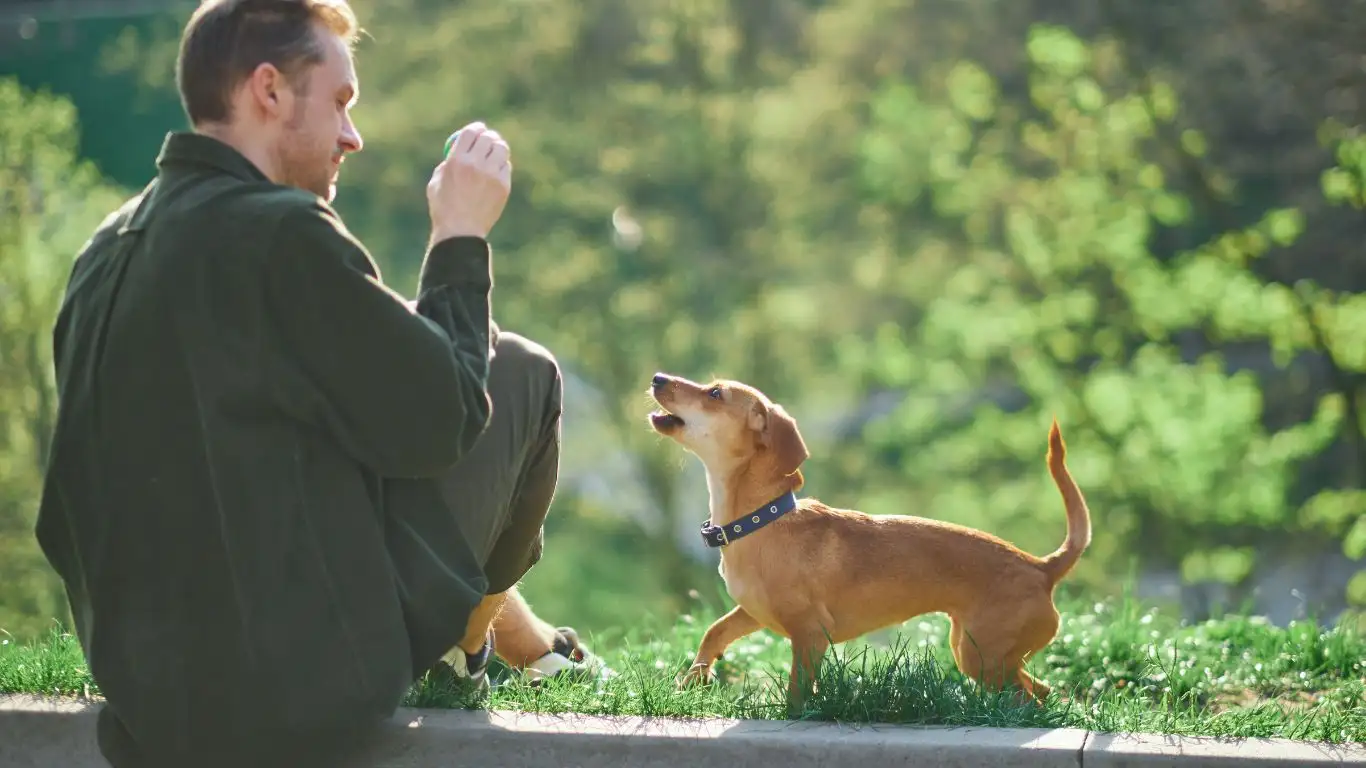
Another underrated ingredient in the patience recipe is good ol’ fashioned socialization. Not just “meet every dog at the park” kind of socialization, but mindful exposure to new people, places, and situations in a controlled, relaxed way.
I used to train a therapy lab named Bailey who got super amped anytime she saw strollers or kids on scooters. Instead of avoiding them, we leaned into exposure—with structure. We’d sit across from playgrounds and just watch. No pressure, no chaos. Gradually, she learned those fast, noisy things weren’t a big deal, and she didn’t need to lunge or bark.
Smart Ways to Add Calm Exposure
- Visit a pet-friendly store: Just walk the aisles slowly, reward calm glances at other dogs or humans, and exit before stress kicks in.
- Loop your route through calm streets: Too many distractions too soon can overwhelm your pup. Scale the environment to their level.
- Invite trusted friends to walk with you: Practicing calm walking with someone else nearby teaches patience in a new social context.
Patience isn’t just a solo journey—it’s also about teaching your dog how to coexist peacefully with the world around them. That’s huge for therapy dogs, but honestly? It benefits every pup, whether they’re destined for hospital halls or your local sidewalk.
Let’s Talk About Your Energy
I know, I know—this one sounds woo-woo, but hear me out. Your dog is constantly reading you. If you’re rushing through the walk, glued to your phone, or tense because you’re anticipating trouble, your dog picks that up like a radio signal. And guess what? They’ll act accordingly.
One of my favorite strategies is what I call “matching energy.” I consciously slow my steps, breathe deeper, drop my shoulders. I literally say out loud, “We’re just out for a chill walk.” And nine times out of ten? My dog responds in kind. When I used this technique with a skittish shepherd mix named Luna, her entire demeanor shifted. Walks turned from reactive chaos into peaceful observation strolls.
Tips for Staying Present:
- Leave the earbuds out for training walks. Be in the moment with your dog.
- Practice walking meditations: Yes, really. Just focus on your steps and breath. It calms both of you.
- Reframe walks as connection time: Not a chore, not a box to check. It’s your time together—and that energy shift matters.
Remember, you’re the guide here. Your dog’s ability to stay calm and patient during a walk is often just a reflection of the energy you’re putting out.
Final Thoughts: It’s a Journey, Not a Checklist
If there’s one thing I want you to take from this entire guide on how to train a dog to be patient during long walks, it’s this: give yourself and your dog some grace. Progress in dog training isn’t linear. There will be backslides, off days, and unexpected surprises. That’s totally normal. What matters most is the relationship you’re building along the way.
In my years as a Canine-Assisted Therapy Trainer, I’ve watched countless dogs go from leash-dragging, distracted whirlwinds to calm, present walking partners. And every single transformation started the same way—with patience, consistency, and understanding.
Whether you’re training a future therapy dog or just hoping for a more peaceful walk around the block, the journey is worth every step.
References
Disclaimer
This article is based on my personal experience as a Canine-Assisted Therapy Trainer and is intended for informational purposes only. It should not be considered a substitute for professional veterinary or behaviorist advice. If your dog is experiencing severe behavioral issues, consult with a certified trainer or veterinary behaviorist for individualized support.

